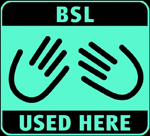Liverpool Arms
Liverpool Arms, Lower Gate Street, Conwy
The Liverpool Arms is built onto – and through – part of Conwy’s medieval town walls. The building is close to Porth Isaf (Lower Gate), one of the original openings in the town walls.
The Liverpool Arms is a relic from the era when Conwy was a thriving port. It is said to have been named by one of its first owners, John Jones. He was captain of a small ship which plied between Liverpool and Conwy. You can read more about him on this page in our mini-tour of Conwy churchyard, where he is buried.
According to legend, the appearance of a ghost at the Liverpool Arms is a sign that someone is soon to die. These appearances are accompanied by a strong scent of vanilla in the air. Vanilla was one of the cargoes landed at Conwy in medieval times.
Or, download mp3 (423KB)
Thanks to RNIB for this audio presentation.
In 1885, Catherine Thomas, licensee of the Liverpool Arms, was taken to court for having her pub open after hours. Her defence – accepted by magistrates – was that she had no idea the impostor was in the building, and that he was courting one of the servants!
At a licensing hearing in 1903, the police asked for one of the pub’s entrances to be closed, to make the premises easier to monitor. At that time police had a duty to prosecute people for being drunk in pubs, but here the inebriated could stagger out through whichever door the police hadn’t used for entry!
One entrance was from Lower High Street, the other from the quay (or Lower Gate Street). Police Sergeant Evans said the “better class of customers used one door" (by the quay) while "the inferior class, such as fishermen and hawkers, used the other”. He also revealed that when the police had their monthly drill, they went to the Liverpool Arms for luncheon. In 1907, the pub’s owner agreed to close “the present door” and construct a new one at the front of the premises.
The photo, courtesy of the Royal Commission on the Ancient & Historical Monuments of Wales, shows Lower High Street in 1952. It is from the Central Office of Information Collection of the National Monuments Record of Wales.
Postcode: LL32 8BE View Location Map
Copies of the old photo and other images are available from the RCAHMW. Contact: nmr.wales@rcahmw.gov.uk





